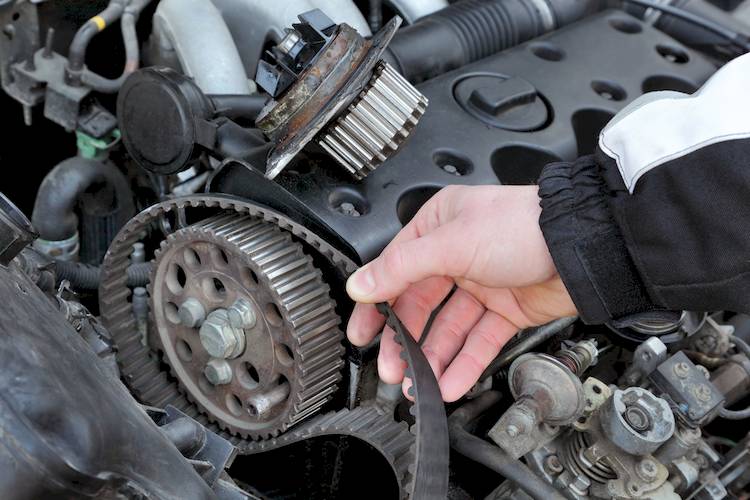

The timing belt on your vehicle is responsible for coordinating the rotation of the crankshaft and the camshaft so the valves in your engine open and close at the right times, and the vehicle runs smoothly. The timing belt allows the valves to be opened and closed once every other revolution of the crankshaft. The belt is made of rubber and has fiber strands in it that provide it with extra strength. It is also lined with teeth to help prevent it from slipping.
The lifetime of a timing belt depends on your specific vehicle type and engine, yet the average is 60,000 to 100,000 miles. It is important to have your vehicle serviced and the timing belt replaced between these average miles to prevent the belt from breaking. A broken timing belt is a much more extensive repair than replacing a working timing belt.
Over time, the timing belt can wear out, but they can also fail without notice. If the timing belt snaps, the valve will crash into the pistons causing a collision. This collision can bend the valves, damage the cylinder head or camshaft, and also do damage to the piston and cylinder wall.
It is a good idea to inspect your timing belt from time to time so you can see if it is showing signs of wear. If it does have wear and tear from being used over the years, contact a professional mechanic to have your timing belt replaced. Catching it ahead of time will save you from having extensive repairs due to the belt breaking. Furthermore, when the timing belt is replaced, the pulleys, tensioner, and water pump should also be replaced.
Since the timing belt can become worn and damaged over time, it is important to recognize the symptoms it shows before it completely breaks.
Signs your timing belt needs to be replaced include:
A squealing noise coming from the front of your vehicle
The vehicle will not start
The belt is cracked, has abrasions, or has a glossy appearance when you inspect it
To prolong the life of your vehicle, have a certified mechanic replace the failing timing belt to eliminate any further problems with your vehicle.



